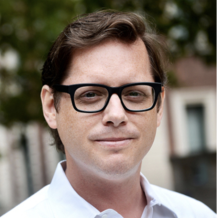Most teams want to save time and capitalize on their efforts, but teamwork can be a mixed bag of challenges. It also can bring hard-won success to groups that check their attitudes at the door, build trust, talk through disagreements, and effectively harness digital tools for communication and feedback.
“The core challenges of setting a compass and creating good habits of communication and talking through different points of view have been going on for many millennia, back to hunting and gathering,” says Daniel Ames, the Ting Tsung and Wei Fong Chao Professor of Business at Columbia Business School. “Launching a startup and taking down a mastodon look pretty different on the surface, but underneath, they share a lot of those same fundamental challenges of coordinating a group of people.” In some ways, says Ames, teamwork is very old, but what’s new is how it’s taught.
MBA students can now learn how to function in teams through Immersive Teamwork, a course Ames developed working with game designers and immersive theater specialists. Students get to experience team dynamics and learn to integrate multiple perspectives while facing other challenges teams must work through.
“They feel the same kinds of psychological dynamics people find in the workplace,” says Ames. Time, resources, and information are scarce during the course’s simulations. “In some activities, students find themselves deep in their own functional silos. And like in the workplace, team members must coordinate with each other without fully understanding everything about their colleagues' roles,” he says.
Most companies today practice collaboration, and business leaders are big proponents of forming diverse working groups to tackle ambitious projects. Cross-functional teams typically offer that diversity, with members from IT or data analytics, business operations, marketing, and other departments. No matter which business discipline MBAs go into, they will inevitably work on teams.
Effective teamwork rests on a set of core factors, which Ames describes with three-Cs: Communication habits, the ability to have healthy Conflict, and a team Climate of trust and psychological safety. When team members hail from different functions, like analytics and design, getting these factors right is both more challenging and more important.
Technology is changing the landscape of teamwork. In part, this means new tools, such as Slack and Zoom, for teaming up. “It's easier to get a piece of information to a team member or to pose a question or meet remotely than it was even a few years ago,” he says.
Technology enhances the Immersive Teamwork class experience: a two-and-a-half-day course that shuffles 36 students into six teams of six and puts them through a series of executional and creative challenges. Students provide peer feedback and self-reflections via web surveys multiple times per day.
“We scrape all of that together, collate it, and push it back out as the course goes along. Everyone has their own dashboard that captures their reflections and feedback from peers,” Ames explains.
“We're harnessing technology for people to be reflective on this experience as they're going through it,” he says. “No other business school offers a class like this. We start on day one with a multi-team, multi-hour-long, intense simulation. And then on day two, students are formed into creative teams, modifying that simulation in a design challenge. Finally, on day three, they bring their creations to life in a showcase with classmates.”
Ames notes, however, that technology can be tricky.
“These tools can provide an illusion of teamwork because we're in constant, instant contact,” he says. But technologies can interfere with teamwork. “If a design team of six people are supposed to be brainstorming and two of them are on their mobile devices, there’s a big, missed opportunity,” he says. The two distracted team members, who are not contributing, also send a signal to the other four that the activity may not be worthwhile.
“Technology yields some great tools for teamwork, but it also carries some challenges and risks for building and maintaining a high-functioning team,” says Ames.
About the Researcher

Daniel R. Ames
Ting Tsung and Wei Fong Chao Professor of Business, Management Division


